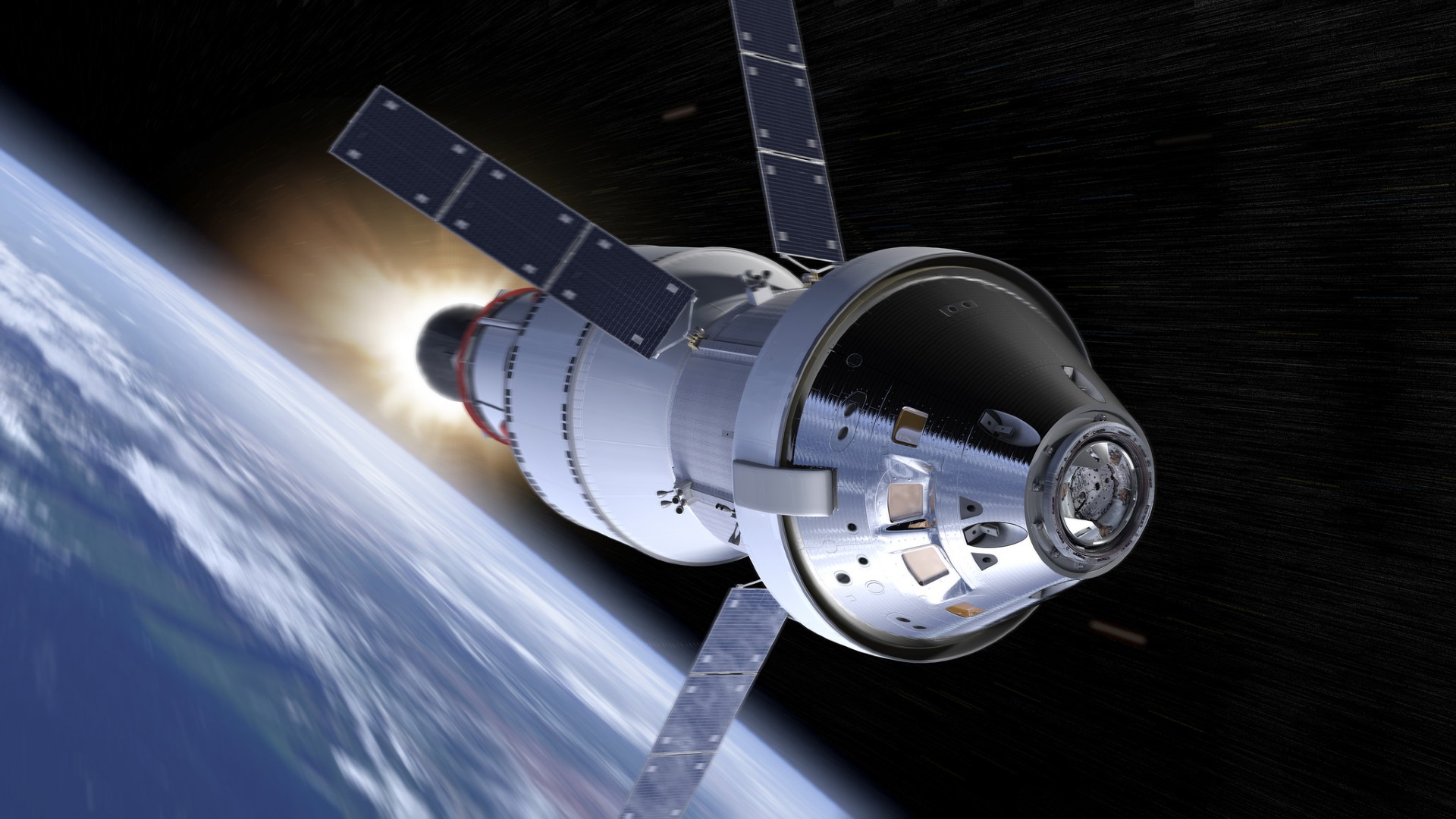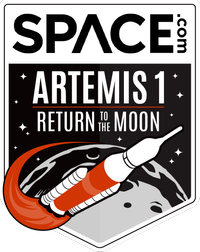Artemis 1 science: How moon mission will help humanity explore deep space
The mission is packed with gear designed to help humans learn how to thrive far from home.


CAPE CANAVERAL, Fla. — NASA is about to launch its biggest rocket since the famous Saturn V took Apollo astronauts to the moon — and that's where this new mission is headed as well.
The agency's Space Launch System (SLS) rocket is set to lift off from Pad 39B here at Kennedy Space Center on Monday (Aug. 29) on Artemis 1, a mission that will send an Orion spacecraft on a six-week, uncrewed trip to lunar orbit and back.
NASA plans to use the Artemis missions — named after the sister of Apollo in Greek mythology — to establish a permanent human presence on the moon and teach the agency how to get humans to Mars. Artemis 1 will be SLS' first launch and the second for NASA's Orion capsule. The mission serves as a stepping stone for Artemis 2 and Artemis 3, which will take humans back to lunar orbit and the lunar surface, respectively.
Related: NASA's Artemis 1 moon mission: Live updates
More: NASA's Artemis 1 moon mission explained in photos
Though Artemis 1 won't launch any crew, Orion won't be empty. In fact, stowed aboard the capsule are a suite of experiments designed to help keep astronauts safe on future Artemis flights — a major focus being exposure to deep-space radiation.
A total of 10 cubesats are hitching a ride aboard Artemis 1, with three focused on radiation. These include a "space weather station" for measuring particles and magnetic fields, an imaging device to be deployed at the Earth-moon Lagrange Point 2 to measure radiation in Earth's plasmasphere, and a study of single-celled yeast to observe the effects of deep-space radiation on living organisms.
Other cubesats will conduct studies of the lunar surface using infrared cameras to search for water, as well as near-surface hydrogen in the permanently shadowed regions around the lunar south pole. One cubesat, dubbed NEA Scout, will deploy in cislunar orbit and spend two years utilizing solar sail technology to intercept and capture images of 2020 GE, an asteroid less than 60 feet (18 meters) wide. (NEA stands for "near-Earth asteroid.")
Breaking space news, the latest updates on rocket launches, skywatching events and more!
And strapped into Orion's commander chair is NASA's "Commander Moonikin Campos," named for Arturo Campos, the electrical power subsystem manager for the Apollo 13 lunar module who helped bring that troubled mission safely back to Earth. Moonikin Campos is equipped with two internal radiation sensors, with additional sensors embedded in the mannequin's seat to measure vibration and acceleration forces during the mission.
The moonikin will also be wearing NASA's new Orion Crew Survival System Suit. The orange flight suit resembles similar suits used during space shuttle missions but features a plethora of upgrades. In an interview with Space.com, Kirstyn Johnson, the deputy team lead for Orion's new suit at NASA's Johnson Space Center in Houston, described some of those upgrades.
"A lot of [the design] has changed based on how the Orion vehicle is now built and how we interact with the life support system," Johnson said. Orion's flight suit is designed to be worn for up to six days, and it features a feeding tube access port on the helmet so astronauts don't have to depressurize their suits to eat.
The suit's familiar orange color is "iconic," said Johnson, and allows rescue teams to more easily spot astronauts in the event of an in-flight emergency. The suit launching on Artemis 1 fits the moonikin perfectly, and once assembly begins on suits for real astronauts, each will be custom-built for the wearer, as opposed to the comparable one-size-fits-most suits from the shuttle era.
Related: 10 wild facts about the Artemis 1 moon mission

Two other torso-only mannequins will accompany Moonikin Campos to aid in onboard radiation studies. Referred to as "phantoms," each is constructed from materials that mimic human bone and tissue, as well as organs unique to adult females, such as breast tissue and ovaries, which are susceptible to radiation damage.
The phantoms have their own names, Helga and Zohar, and each is equipped with over 6,000 passive radiation detectors and 34 active radiation detectors. The pair will serve as part of the Matroshka AstroRad Radiation Experiment (MARE), an international research partnership between the German Aerospace Center, the Israel Space Agency and NASA. Zohar will be wearing an AstroRad vest, which is designed to allow astronauts to leave shelter areas of Orion and other spacecraft during solar radiation events while maintaining their protection. Helga will not be wearing the AstroRad vest, and researchers plan to compare exposure rate differences between Helga and Zohar upon Orion's return.
"The MARE experiment's main goal is to evaluate the effectiveness of the AstroRad vest in protecting the astronauts from solar energy particles … it will be done by comparing the radiation values absorbed by Zohar, protected by the vest, to those of Helga,” explained Shirit Schwartz, AstroRad product director, during an Aug. 17 press call.
Thomas Berger is the principal investigator for Helga and Zohar at the German Aerospace Center. He expects the data collected by the phantoms to aid in the vest's continued development. "So we'll use, in principle, the possibility to have these two phantoms in Orion to measure not only the radiation load table received, but to test also the possibility of new radiation protection measures," Berger said on the call.
The Orion spacecraft itself is also equipped with several radiation detectors. The Radiation Area Monitor (RAM) consists of six passive sensors to record total radiation exposure through the end of the mission. And the European Space Agency has placed five active dosimeters throughout the vessel to monitor radiation levels in real time.
A critical part of Orion's radiation exposure prevention systems includes the Hybrid Electronic Radiation Assessor (HERA). HERA is designed to serve as part of Orion's caution and warning system, which can alert astronauts to incoming solar particle events, allowing crews to preemptively seek shelter.
Radiation in deep space doesn't just affect humans. Biology Experiment-1, which is also stowed aboard Orion, houses four investigations to study the effects of radiation on plants and fungi. NASA Biological and Physical Sciences plant biology program scientist Ye Zhang joined the Aug. 17 press call to explain the experiment's role in advancing humanity's quest for long-term sustainability in space.
"These investigations aboard Artemis missions will help us develop future countermeasures and identify strategies to develop sustainable crops, and in scientific advancements that will ensure crew health and productivity,” Zhang said.
The experiment will focus on changes in the nutritional value of seeds, how fungi repair their DNA, yeast adaptability, and algal gene expression. Researchers hope observing these different biological systems will lead to further innovations in the ability for humans to survive long-term on the moon and Mars.
Follow us on Twitter @Spacedotcom or on Facebook.

Josh Dinner is the Staff Writer for Spaceflight at Space.com. He is a writer and photographer with a passion for science and space exploration, and has been working the space beat since 2016. Josh has covered the evolution of NASA's commercial spaceflight partnerships and crewed missions from the Space Coast, as well as NASA science missions and more. He also enjoys building 1:144-scale model rockets and human-flown spacecraft. Find some of Josh's launch photography on Instagram and his website, and follow him on X, where he mostly posts in haiku.
